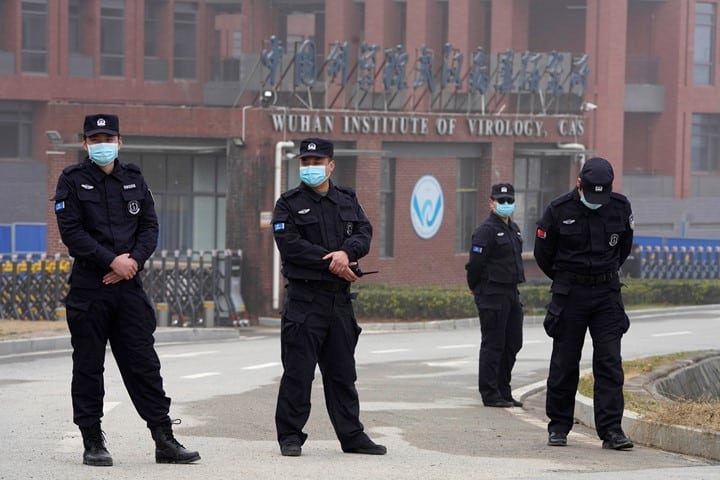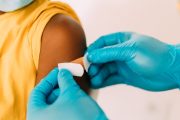
More than a year after the evidence began mounting that the China virus, known as COVID-19, escaped a lab at the Wuhan Institute of Virology, the Washington Post has finally admitted the theory is “credible.”
The admission wouldn’t really be news if the Post’s fact checker, Glenn Kessler, hadn’t ridiculed those who suggested the virus did escape the lab, including Senator Ted Cruz (R-Texas). Indeed, Dr. Kessler and other scientists at the Post declared that it was “virtually impossible” for the virus to have escaped the lab. It was a precipitous and ridiculous claim from, well, a man who is supposed to check facts.
Score on the facts: Cruz: 1; Post: 0
Timeline
To his credit, Kessler admitted the Post was wrong, although he didn’t apologize to Cruz or Razorback Republican Sen. Tom Cotton, who also speculated that the virus sprung from a lab experiment gone awry.
At the time, the Post claimed that Cotton “keeps repeating a coronavirus conspiracy theory that was already debunked.” Of course, how Kessler admits that theory wasn’t “debunked.”
“The source of the coronavirus that has left more than 3 million people dead around the world remains a mystery,” Kessler wrote. “But in recent months the idea that it emerged from the Wuhan Institute of Virology (WIV) — once dismissed as a ridiculous conspiracy theory — has gained new credence.”
Continued Kessler:
How and why did this happen? For one, efforts to discover a natural source of the virus have failed. Second, early efforts to spotlight a lab leak often got mixed up with speculation that the virus was deliberately created as a bioweapon. That made it easier for many scientists to dismiss the lab scenario as tin-hat nonsense. But a lack of transparency by China and renewed attention to the activities of the Wuhan lab have led some scientists to say they were too quick to discount a possible link at first.
Sen. Tom Cotton (R-Ark.) from the start pointed to the lab’s location in Wuhan, pressing China for answers, so the history books will reward him if he turns out to be right. The Trump administration also sought to highlight the lab scenario but generally could only point to vague intelligence. The Trump administration’s messaging was often accompanied by anti-Chinese rhetoric that made it easier for skeptics to ignore its claims.
Then comes the timeline, which shows that the lab theory wasn’t so crazy after all. Worse still, those who ridiculed the theory should have known it was plausible as early as January 20.
The timeline includes these items:
Jan. 26: A study by Chinese researchers published in the Lancet of the first 41 hospitalized patients in Wuhan who had confirmed infections found that 13 of the 41 cases, including the first documented case, had no link to the seafood marketplace that originally was considered the origin of the outbreak.
Jan 30: Sen. Tom Cotton, speaking at a Senate Armed Services Committee hearing, says: “This coronavirus is a catastrophe on the scale of Chernobyl for China. But actually, it’s probably worse than Chernobyl, which was localized in its effect. The coronavirus could result in a global pandemic.” He adds: “I would note that Wuhan has China’s only biosafety level-four super laboratory that works with the world’s most deadly pathogens to include, yes, coronavirus.”
Feb. 6: Botao Xiao, a molecular biomechanics researcher at South China University of Technology, posts a paper stating that “the killer coronavirus probably originated from a laboratory in Wuhan.” He pointed to the previous safety mishaps and the kind of research undertaken at the lab. He withdrew the paper a few weeks later after Chinese authorities insisted no accident had taken place.
Feb. 16: Cotton, in response to a Washington Post article critical of him, offers four scenarios on Twitter: “1. Natural (still the most likely, but almost certainly not from the Wuhan food market) 2. Good science, bad safety (e.g., they were researching things like diagnostic testing and vaccines, but an accidental breach occurred). 3. Bad science, bad safety (this is the engineered-bioweapon hypothesis, with an accidental breach). 4. Deliberate release (very unlikely, but shouldn’t rule out till the evidence is in). Again, none of these are ‘theories’ and certainly not ‘conspiracy theories.’ They are hypotheses that ought to be studied in light of the evidence.”
April 14: Josh Rogin, writing in The Post, reveals that in 2018, State Department officials visited the WIV and “sent two official warnings back to Washington about inadequate safety at the lab, which was conducting risky studies on coronaviruses from bats. The cables have fueled discussions inside the U.S. government about whether this or another Wuhan lab was the source of the virus — even though conclusive proof has yet to emerge.”
April 22: Yuri Deigin, a biotech entrepreneur, in a long and detailed post on Medium, reviews “gain-of-function” research undertaken at the lab and concludes that “from a technical standpoint, it would not be difficult for a modern virologist to create such a strain” as the new coronavirus. He adds: “The opposite point is worth repeating too: the inverse hypothesis about the exclusively natural origin of the virus does not yet have strong evidence either.”
April 24: Under pressure from the White House, the National Institutes of Health terminates the grant to EcoHealth Alliance that funded study of bat coronaviruses at WIV.
May 3: Secretary of State Mike Pompeo says in an interview with ABC News: “There’s enormous evidence that that’s where this began. … Remember, China has a history of infecting the world, and they have a history of running substandard laboratories. These are not the first times that we have had the world exposed to viruses as a result of failures in a Chinese lab.”
June 4: Milton Leitenberg, writing in the Bulletin of the Atomic Scientists, reviews the history of lab safety and the type of research conducted at WIV and argues that the lab-leak theory cannot be easily dismissed. “The pros and cons regarding the two alternative possibilities—first, that it arose in the field as a natural evolution, as many virologists maintain, or second, that it may have been the consequence of bat coronavirus research in one of the two virology research institutes located in Wuhan that led to the infection of a laboratory researcher and subsequent escape—are equally based on inference and conjecture,” he says.
And on … and on … and on.
Despite all that, as well as reports from Fox News that the virus escaped a lab, Kessler tweeted this on May 1:
I fear @tedcruz missed the scientific animation in the video that shows how it is virtually impossible for this virus[to] jump from the lab. Or the many interviews with actual scientists. We deal in facts, and viewers can judge for themselves.
Cruz had accused the Post of peddling Red Chinese “propaganda” after Kessler posted a video that said the virus came from the city’s filthy and repellent wet markets. They retail exotic animals, including bats, for human consumption. That aside, the Post wasn’t dealing in “facts,” as Kessler has confessed. It was dealing in speculation.
The day after Kessler’s snarky tweet, John Roberts of Fox tweeted more from an intelligence source:
With Kessler’s admission today, Cruz offered this tweet: “Clowns.” The one-word zinger appeared over screen shots of Kessler’s article last year and today’s offering.
Evidence for Lab Theory Mounts
As The New American reported today, evidence for the lab theory is mounting quickly. On Sunday, the Wall Street Journal disclosed three lab workers had landed in the hospital in 2019. And U.S. intelligence sources knew it.
For years, China’s notorious Bat Lady scientist was fiddling with the virus at the Wuhan Institute of Virology, a fact that suggests the potentially fatal Asiatic pathogen did indeed escape a lab.
H/T: Fox News



